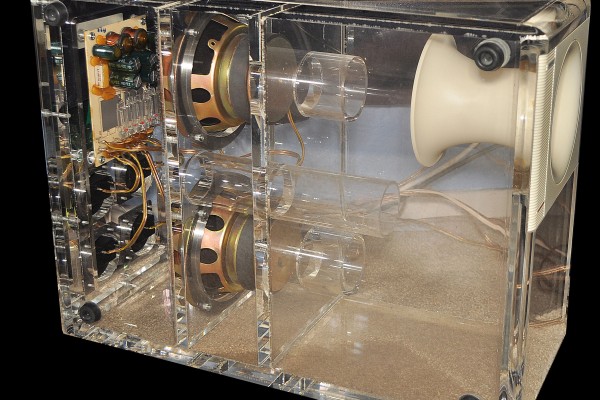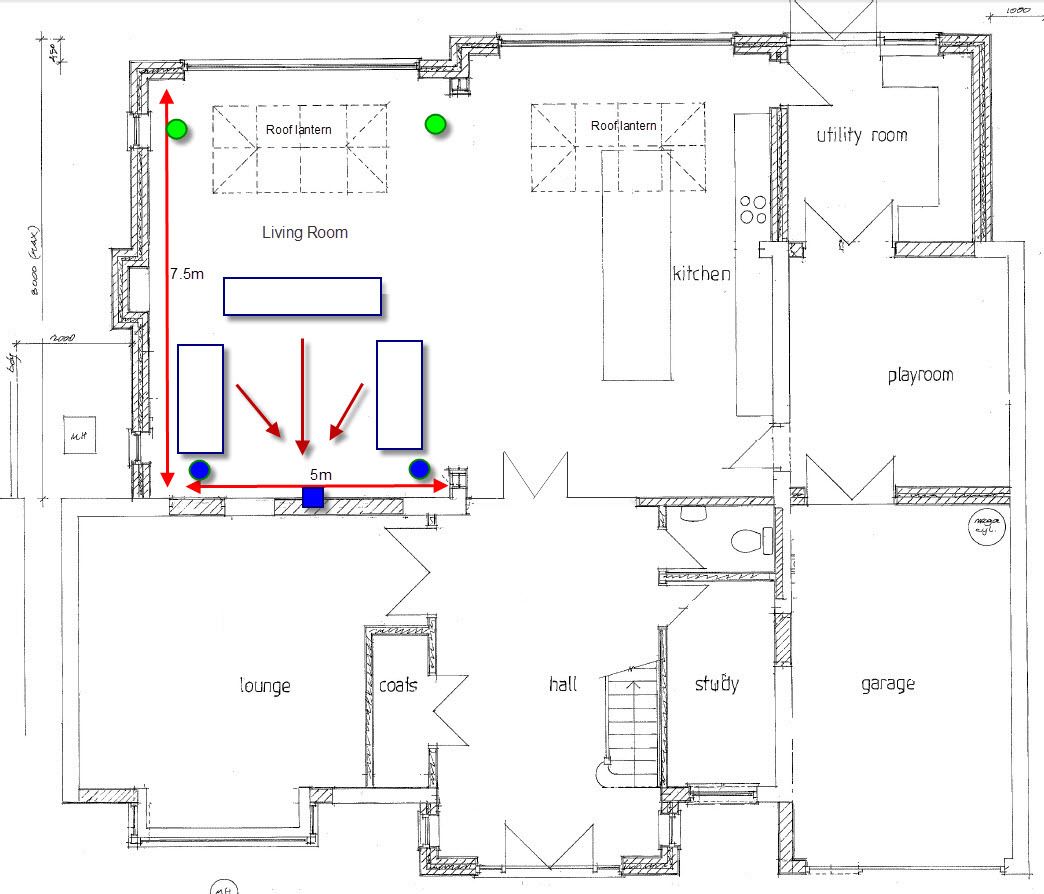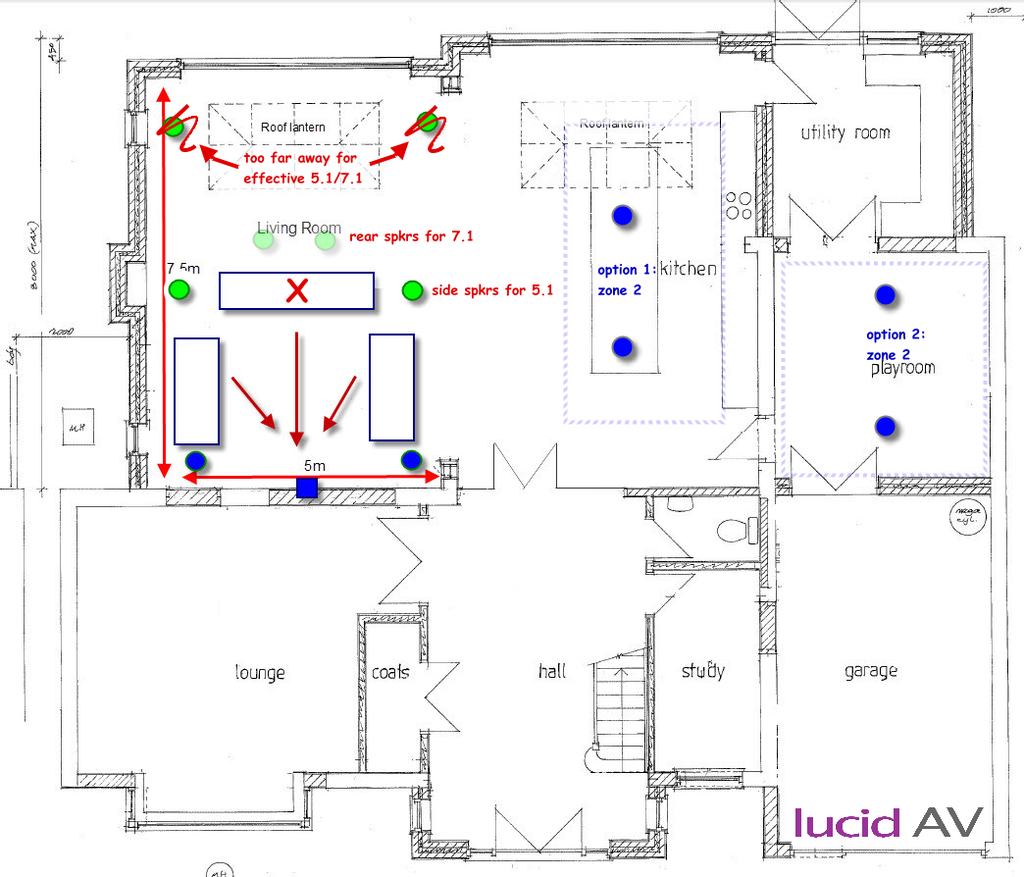I do this kind of thing for a living.
Richers is okay so long as you get someone with first hand experience who is actually interested in putting together the right solution for you rather than just tucking you up with some old flannel and a load of boxes. There are specialist installation companies dotted across the metropolis.: The Cornflake Shop (W1T), Robert Taussig (W1U), Oranges and Lemons (SW11), Grahams Hi-Fi (N1), Finite Solutions (SW6), Sevennoaks Sound & Vision (national chain) etc etc. It might be easier to start with a brand (say Monitor Audio) and then use the Dealer Finder tool. Look for 'custom install' dealers as a sub category.
In-wall/in-ceiling is fashionable and looks 'cool' because it is hidden. They use cone speakers in the main. The trick is that they are buried in to the wall or ceiling so the depth is hidden. There are speakers that work on a vibrating plate principle (Amina is one brand) and that are then plastered over (yes, seriously!) but you might need to revise your budget upwards quite significantly to get decent performance equivalent to conventional speakers. This kind of thing is more a lifestyle choice. In general terms for every £100 spent in conventional box loudspeakers you need to spend about 1.5x that in sub/sat speakers, 2x~3x that in conventional in-wall/in-ceiling and about 8x~12x that for Amina-style invisible speakers to give roughly equal performance.
I have had a look at your plan and made a few changes that would make the system perform better and open up a couple of interesting options too.
1) 'rear' speakers moved closer to the viewing area. They were just too far away to be of any use, particularly if they were in-ceiling speakers. The other thing to be aware of is that they aren't rear speakers. Their correct designation is 'Surround speakers - Side'. That's because in every movie sound mixing studio in the world the surround effects speakers for 5.1 are located either side of the prime listening position (in your case this is marked with an X on the plan) rather than directly behind it.
2) Don't go 7.1: With the area being open plan I think 7.1 would be wasted. This is why I have shown 'Surround speakers - Rear' as ghosted. It would be far more effective to take the budget you'd spend on two sets of surround effects speakers and combine it to purchase one pair of really good dipole speakers. These will give the sort of diffuse and enveloping effects sound that will send goosebumps up your arms and have you looking over your shoulder to see who is there.
3) Mix and match speaker types: Modern AV receivers at £500+ are actually pretty accomplished for music too. They won't replace a good dedicated stereo system, but you will be surprised how good music can sound through a properly thought out and installed AV system. To this end (and if budget and aesthetics allows) have a think about floorstanding front speakers. Invest in the centre speaker to match.
For the surrounds, given the open plan layout of the room then the two sensible options are floorstanders or in-ceilings. Bearing in mind the recommendation of using dipoles in point 2 and the fact that dipole floorstanding speakers don't exist, then the sensible option is in-ceiling dipoles.
4) Other options: At the sort of budget and quality being discussed, you'll find that nearly every AV receiver is a 7.1 design. That means it can be used either as 7.1 in the conventional way, or as a 5.1 amp with the extra remaining two channels dedicated to a different part of the house. This feature is called Zone 2 (marked in blue on the plan). I use this quite regularly for clients who would like music or TV sound somewhere else e.g. a kitchen or bathroom or playroom.
The second zone can be operated completely independently of the main zone. It can be switched on/switched off, volume and source changed, even tune the radio or select streamed music... all without affecting the main 5.1 zone which might be off or doing something else entirely different. Depending on the AV receiver chosen then it's likely that there will be a smart phone app on iOS or Android to control the receiver. This includes independent control of Zone 2, so with your smart phone in hand you could walk in to the kitchen, switch on Z2 and listen to radio or the sound from the TV without having to run the main system. It might be nice to cook in the evening with some music playing, or perhaps when there's a social gathering you can have both zones playing the same thing so that sound is spread evenly around the entertaining areas. Where you have zone 2 is entirely up to you; it's not restricted to indoors. There are weatherproof speakers available that would allow you to have sound outside if that's your wish.
Two other options not shown but worth considering are
Zone 3 and
Front Height speakers. Zone 3 is exactly what Zone 2 is, but an additional zone. So the amp would have outputs for the main speakers, zone 2 and zone 3. Front Heights is something different. Some of the larger AV receivers with 7.1 or 9.1 speaker outlets have the option to run an additional pair of small speakers above the TV or projection screen. The receiver then uses some clever processing to extend the front channel effects up and to create additional height information. It has the effect of lifting the roof off the room. This is kind of a forerunner to Dolby Atmos except it doesn't require the special films with the Atmos sound track; it works on any source so long as the feature is engaged. A 7.1 receiver with front height option can't then run Zone 2, the reason being that there's only one speaker outputs which are soft selected to be either Z2 or Front Height but not both at the same time. 9.1 receivers are less restricted. It can be possible to have 5.1 + 2ch front height and also still have a spare set of outputs to run Zone 2.
Cabling: 4mm cross sectional area 100%-copper multi-stranded (79 strand) cable with a low smoke zero halogen (LSZH) jacket will cover all your needs for the main speakers including any additional zones. The thickness is important where longer runs are required. A 4mm CSA cable will deliver 94% of the amp power to a speaker 30m away. i.e. the losses due to resistance are just 6% at that distance. Thinner cable will dissipate more power. 2.5mm loses about 10% at the same distance. 1.5mm loses around 18%.
The subwoofer doesn't use speaker cable. It uses coax cable. It looks like a single wire phono cable such as you have seen with the red and the white phono connections on other bits of audio and video gear over the years. The difference with subwoofer cable is it must be very well shielded internally to prevent stray signals causing interference that then manifests as hum within the sub.
This stuff is extremely good and also very easy to hide because it is much thinner than conventional shielded subwoofer cables.
The rest of your cabling consists mainly of HDMI leads, some aerial coax, network cable and power.
Getting the cables laid in during the build phase is a great idea, but you really must have a very good idea of exactly where the final location for each piece of equipment will be otherwise the cables won't be in the correct places. So while you may have quite some time to decide the final makes and models of gear, the cabling is really driven by the build phase of the project. Look at the timetable for that as your time scale for the To Do list of deciding speakers and whether you want to use additional zones.





